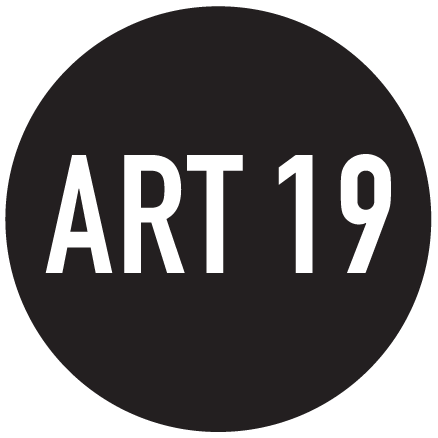e-flux : Radical Software Kunsthalle Wien
Kunsthalle Wien presents a major new exhibition examining the pioneering role of women in digital art. Organised in collaboration with Mudam Luxembourg–Musée d’Art Moderne Grand-Duc Jean, Radical Software: Women, Art & Computing 1960–1991 (February 28–May 25, 2025), brings together over one hundred works by fifty artists including painting, sculpture, installation, film, performance and many computer-generated drawings and texts.
A principally analogue exhibition about digital art, Radical Software focuses on the decades that preceded the rise of the World Wide Web and the proliferation of digital information and images that ensued, shaping artistic production and visual culture in the following decades. The exhibition is titled after the magazine that Beryl Korot started with fellow artists Phyllis (Gershuny) Segura and Ira Schneider in 1970. They adopted the term software (as opposed to hardware) as a metaphor and powerful tool for social change. The magazine’s wide-ranging editorial model and mission to serve as “an evolving handbook of technology,” decentralising access to information, predated the World Wide Web by two decades.
Beginning with works from the 1960s and 1970s, the exhibition spans a period from the first years of integrated circuit computing to the “microcomputer revolution,” which led to the birth of personal computing in the 1980s. The first works date from a time in which artists, poets, writers and filmmakers experimented with mainframe and minicomputers alongside mathematicians, scientists and engineers to produce and exhibit the first computer-generated images and texts. During these three decades the computer migrated from the laboratory to private, domestic space. Yet with each retelling of this history, the significant engagement of women with the technology has been largely overlooked. Set within a period that was also marked by the second wave of feminism, this exhibition documents a lesser-known history of the inception of digital art, countering conventional narratives on art and technology by focusing entirely on women.
Radical Software: Women, Art & Computing 1960–1991 also engages with contemporary questions of how technology interfaces with issues of identity and equality. The exhibition follows a renewed interest in the post-internet discourse of cyberfeminism, which highlights the role that women played in the creation of new digital technologies and engages critically with the entanglement of technology and power structures.
Artists: Rebecca Allen (b. 1953, Detroit), Elena Asins (b. 1940, Madrid–d. 2015, Navarra), Colette Stuebe Bangert (b. 1934, Columbus) & Charles Jeffries Bangert (b. 1938, Fargo–d. 2019, Lawrence), Gretchen Bender (b. 1951, Seaford, Delaware–d. 2004, New York City), Gudrun Bielz (b. 1954, Linz) & Ruth Schnell (b. 1956, Feldkirch), Dara Birnbaum (b. 1946, New York City), Inge Borchardt (b. 1935, Szczecin, formerly Stettin), Barbara Buckner (b. 1950, Chicago), Doris Chase (b. 1923–d. 2008, Seattle), Analívia Cordeiro (b. 1954, São Paulo), Betty Danon (b. 1927, Istanbul–d. 2002, Milan), Hanne Darboven (b. 1941, Munich–d. 2009, Hamburg), Bia Davou (b. 1932–d. 1996, Athens), Agnes Denes (b. 1938, Budapest), VALIE EXPORT (b. 1940, Linz), Anna Bella Geiger (1933, Rio de Janeiro), Isa Genzken (b. 1948, Bad Oldesloe), Dominique Gonzalez-Foerster (b. 1965, Strasbourg), Lily Greenham (b. 1924, Vienna–d. 2001, London), Samia Halaby (b. 1936, Jerusalem), Barbara Hammer (b. 1939, Los Angeles–d. 2019, New York City), Lynn Hershman Leeson (b. 1941, Cleveland), Grace C. Hertlein (b. 1924, Chicago–d. 2015, Chico), Channa Horwitz (b. 1932–d. 2013, Los Angeles), Irma Hünerfauth (b. 1907, Donaueschingen–d. 1998, Kreuth), Charlotte Johannesson (b. 1943, Malmö), Alison Knowles (b. 1933, New York City), Beryl Korot (b. 1945, New York City), Katalin Ladik (b. 1942, Novi Sad), Ruth Leavitt (b. 1944, St. Paul, Minnesota–d. 2025, Baltimore), Liliane Lijn (b. 1939, New York), Vera Molnár (b. 1924, Budapest–d. 2023, Paris), Monique Nahas (b. 1940, Paris) & Hervé Huitric (b. 1945, Paris), Katherine Nash (b. 1910–1982, Minneapolis), Sonya Rapoport (b. 1923, Brookline–d. 2015, Berkeley), Deborah Remington (b. 1930, Haddonfield–d. 2010, Moorestown), Sylvia Roubaud (b. 1941, Munich), Miriam Schapiro (b. 1923, Toronto–d. 2015, Hampton Bays), Lillian Schwartz (b. 1927, Cincinnati, Ohio–d. 2024, New York City), Sonia Sheridan (b. 1925, Newark–d. 2021, Hanover), Nina Sobell (b. 1947, Patchogue), Barbara T. Smith (b. 1931, Pasadena), Tamiko Thiel (b. 1957, Oakland), Rosemarie Trockel (b. 1952, Schwerte), Joan Truckenbrod (b. 1945, Greensboro), Anne-Mie Van Kerckhoven (b. 1951, Antwerp), Ulla Wiggen (b. 1942, Stockholm)
Symposium: Radical Software: On the first day of the exhibition, 28 February 2025, Kunsthalle Wien and TU Wien will host a symposium bringing together highly distinguished female researchers from the fields of art and science including Gerti Kappel, Nadia Magnenat-Thalmann, Margit Rosen, Zsofi Valyi-Nagy, Anne-Mie Van Kerckhoven, Ina Wagner and artists Gudrun Bielz, Inge Borchardt, Anna Bella Geiger, Dominique Gonzalez-Foerster, Liliane Lijn, Sylvia Roubaud, Ruth Schnell, Nina Sobell, Tamiko Thiel and Anne-Mie Van Kerckhoven.
Exhibition publication: The exhibition is accompanied by a new publication including essays by Tina Rivers Ryan, Margit Rosen and the exhibition’s curator, Michelle Cotton. Co-published with Mudam Luxembourg–Musée d’Art Moderne Grand-Duc Jean and Verlag der Buchhandlung Walther und Franz König, it features over 200 illustrations, a timeline and twenty-seven new interviews with artists from the exhibition.
Kunsthalle Wien is financed by the Magistratsabteilung Kultur der Stadt Wien (MA 7). The artistic programme is also supported by the members and patrons of the Kunsthalle Wien Club. The exhibition and symposium are made possible through the generous support of Art Mentor Foundation Lucerne.
Article published on https://www.e-flux.com

